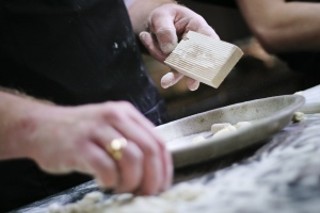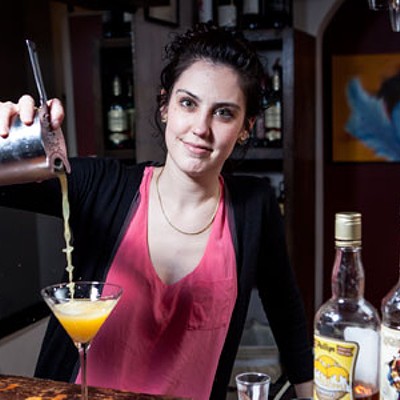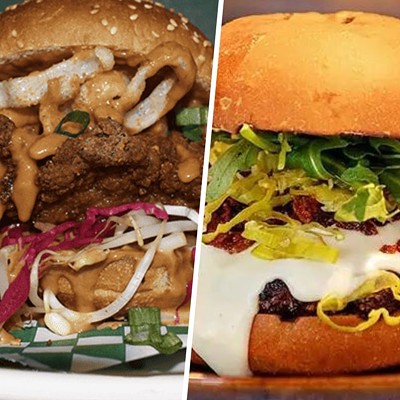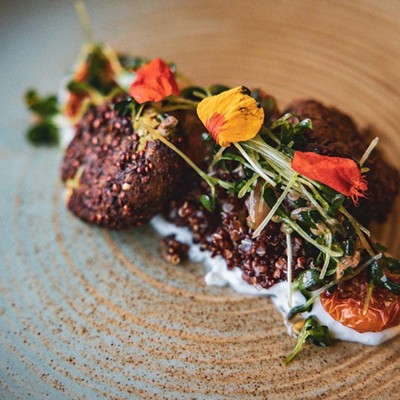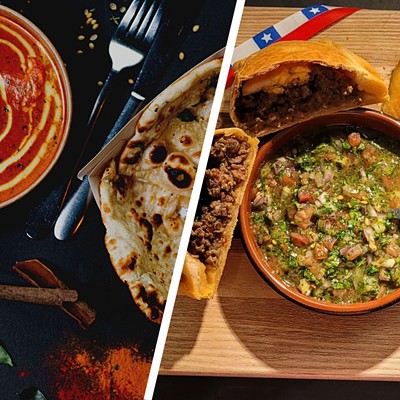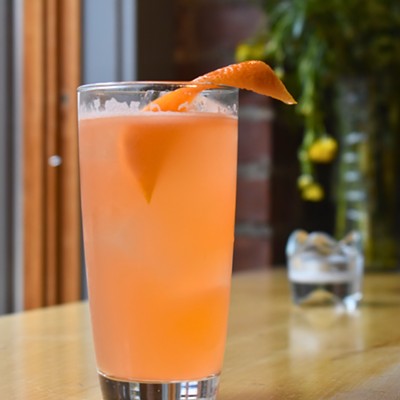I strive for minimalism in the kitchen. My cupboards have just what I need. My fridge is small, which keeps excess at bay. Knives hang on a magnet on the wall.
It's all smooth, except my tool drawer.
Oh, the tool drawer. I can barely open it. But all 50 items are essential in my life: the olive pitter; the rasp; the whisk collection; the small, off-set and rubber spatulas. There's no room for anything else.
But tonight, I stare longingly when Dennis Johnson, chef/proprietor of Fid, pulls out a gnocchi paddle during a Monday night supper club. Is that little piece of ridged wood the answer to my gnocchi woes?
Dennis and his partner, Monica Bauché, offer classes on some Monday nights for anyone keen to learn. The menu changes depending on what's in season and the students vary. Tonight I'm here with a handful of women all keen to make potato gnocchi, sizzle mushrooms and spinach in cream, fillet a halibut, make a creamy sorrel sauce and assemble tiny tart tatins. But back tothe gnocchi.
Gnocchi ("gnaw-key") are dumplings unique to north Italy. Recipes vary dramatically: Potatoes and flour constitute the bulk of the mixture, but additions such as ricotta, squash or even eggplant aren't uncommon. Gnocchi come in all shapes and sizes: walnuts or peas, rectangles or squares. They're unique to you and your hands.
My hands let me down. I've been attempting gnocchi for a long time with minimal success. No matter what I do, my gnocchi look like golf balls and taste gluey.
But I'm not worried. Hanging off Dennis' apron strings means I'll get the inside scoop. "The secret to gnocchi," Dennis says in a stage whisper, "is high-starch potato, cooked with as little moisture as possible."
The less starch a potato has, he says, the less likely your dough will stay together. When the dough isn't behaving, it's natural to add more flour, but the more flour you add, the denser your gnocchi will become.
Dennis starts with potatoes such as netted gems or russets. After baking and mashing, "dry, smooth potato" is mixed with egg yolks, flour and salt. He places a Sharpie (for size reference) on a floured counter, breaks off pieces of dough and rolls them into Sharpie-width ropes. He cuts the ropes into small squares, or Barbie-pillows, as one student calls them.
With paddle in left hand, pillows are placed onto the ridged surface and rolled off the paddle, guided by the right thumb. The corrugated curls land on the flour-dusted counter top and we boil them in salty water until they float. Next, we plunge them into a hot pan filled with bubbling butter, cream, thinly sliced mushrooms and a pile of fresh local spinach. It's the best gnocchi I've ever eaten. The sauce clings to the inner crevices of the dumplings---which is why the paddle is so important.
A week later I return to Fid. I am desperate to recreate Dennis' gnocchi, but am convinced I need a paddle. I ask to borrow one, just for a day. Although crevices can be made with the tines of a fork, Dennis sees the desperation in my eyes. "Happy birthday," he says as he hands me a paddle. My birthday isn't for months, but he doesn't have to know. When I get home, I open my tool drawer. Miraculously, the paddle slides right in.

